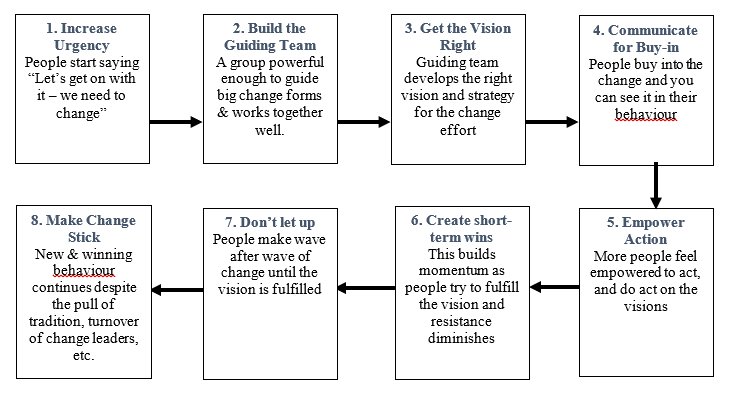
In 2015, Mercedes Benz Financial Services South Africa (MBFSSA) scored in the bottom quartile of companies in its Daimler region (Africa, Asia, Pacific). When the survey was repeated in 2017, MBFSSA came 1st in the region! This is a huge cultural turnaround in a very short time. How did they do it?
I interviewed the current CEO of MBFSSA, Joerg Essig, and asked him how he did it. His story is especially encouraging in a country where changing organisational culture is a national imperative. We speak of the ANC, national government, State Owned Enterprises, and a host of organisations in the private sector that are feeling a groundswell of public pressure to change in favour of a more ethical and transparent culture.
An organisation’s culture does not need to be outright toxic in order for change to be desirable. When Essig arrived at MBFSSA, he came into a culture in which there was a lot of hierarchy. “At all levels people had belief in the hierarchy with the consequence that people didn’t speak up, raise their voice or deliver at 100%. We had so much unused capacity. People were delivering at maybe 70 or 80%. There were lots of issues regarding opportunities, race, fairness, credibility and respect.” This situation could probably have continued for years without much negative consequence. After all, it doesn’t sound too awful – and business results were fine. However, various audits revealed that there was insufficient quality and attention to detail.
Any new leader worth his salt will spend the early days, weeks and months of his tenure listening, gathering information and making observations before forming clear opinions and plans. Essig sought and listened to input from people all over the organisation. There were the “official voices” of his managers, and the “unofficial voices” of those in non-managerial positions. Something didn’t add up. There was lack congruence in the information.
Of course, this is completely normal – whenever there is a new leader, you can expect to find that people will craft the message they want that leader to hear according to their own agenda. You will find that there are people invested in preserving the status quo (especially at a senior level), and those who are invested in change – so who do you believe?
When Essig read the comments from the 2015 Great Place to Work® survey, he was able to put 2 and 2 together. It was clear that something fundamental needed to change and that he needed to unite his Exco team around the change. After all, MBFSSA had once upon a time been the benchmark in the wider international organisation.
Not only did Essig want to see the business reclaim its former glory, but it was also essential to transform the company in order to take it into the digital future and deliver results. “We needed to leave a sustainable legacy. International assignees come for 3 – 5 years, but what they leave behind is not necessarily sustainable. How would we make this transition to a digital future, create something sustainable and not personality-based, in a declining market with this atmosphere? We really needed people to be willing to show up 100%. We were going to need them to dig deep, work awkward hours and be on their toes to move from a mediocre to a high performance culture,” says Essig.
This was not the first time Essig had needed to change an organisation’s culture. He speaks of the fact that his own leadership values are in line with the kind of workplace Daimler Financial Services (the global business) seeks to achieve. The common theme throughout has been the sense that the department or company was not performing at 100%, so the main driver in each case has been the need to deliver results while and through creating a positive culture.
I asked Essig what the key ingredients are in his approach to changing culture:
1. Make it easy for your people to have lots of personal encounters with you. “Be as close to the people as possible and as time allows. Walk around. Speak to people. Show that you care, that you are interested in them as people and in their business.” This is classic MBWA (Management By Walking Around, as recommended by management guru Tom Peters). “I would ask people about how it was going, what are the challenges, etc. You can’t underestimate the impact that this has on the other leaders. They see what you are doing and start to do some of the same. It is interesting how so many people find this way of leading closer to people’s hearts than commanding. So people jumped on the bandwagon very quickly. Those who didn’t join in discovered they were in the minority and would either face consequences or would take themselves out of the organisation.”
2. Get your leadership team aligned behind the change. This can be a real challenge to achieve and to sustain. “We had lots of discussions with members of the team who struggled to align; we had to be open and honest and trust them to deliver. We had to give them support and encouragement and a certain amount of choice in terms of aligning themselves with what we were trying to achieve.” In any culture change, those who are unable to get on board often take themselves out of the organisation voluntarily. If they don’t, they need to be helped to leave and move to an environment where they fit better.
3. Make culture change a project. Essig ensured that a Great Place to Work® project team was put together of people from all parts of the organisation, charged with looking at how systems, processes and structures needed to change in order to align with the desired culture. Make sure that this team is empowered and has a budget. It needs to have real clout.
4. Talk a lot about what is important. “We have shorter meetings now, but we have more of them. Our monthly Town Hall meeting is an opportunity to share information, celebrate successes, talk about target achievement, people on the move and people development, birthdays and anniversaries. Now I don’t do all the talking any more. I only have a minor part, and all sorts of other people from all levels stand in front of 150 people and lead and moderate the meeting. Project leaders talk about their projects. GPTW people talk about their project. At our 20th anniversary we had a Town Hall with senior international guests. It was entirely moderated and presented by non-managerial employees on a big stage to 200 or more people. I felt so proud of this.”
5. Celebrate successes. Reward and recognise team members publicly when they do contribute. “You have to speak for your great people so that they get the recognition they deserve.” Daimler Financial Services has regional and global awards. It has become a feature of the organisational culture that leaders and team members in MBFSSA make compelling submissions about their colleagues for these awards.
6. Create a family feeling. Make a real effort to include every member of the organisation. Raise their expectations and give them the sense that every one of them can contribute. This was more important in South Africa that in other countries where Essig has worked: “This family feeling does not exist in this society. There is nothing else that brings all of us together.” It was important to create a family feeling in MBFSSA that transcends racial and social divisions. This belonging and family feeling causes loyalty and energy. Where this safety exists people will step out of their narrow job descriptions and get engaged. “Now we have a choir who we use in Town Hall and other celebrations. They run it themselves. You don’t have to do for them – just give support and a budget and they do for themselves. Give them the responsibility and they will fill in the space.”
7. Be courageous and model the behaviour you are looking for. Essig was looking to create a culture in which transparency and openness are a feature. This meant that he had to demonstrate this openness. “We did some brave things in this context. We had no Q&A. We started a box where people could ask anonymous questions. We would open this publicly and answer questions openly. Some questions were personal and nasty, but we answered as well as we could in the moment. Colleagues found this brave and acknowledged this openness. The box is still there but is empty because people now ask their questions more openly and more appropriately. Now everyone knows how bonuses are calculated, and can see month to month how we are doing – and how they can contribute to target achievement.”
8. Be consistent. What you start you must sustain. “There are some moments of truth where you have to really walk the talk – it is difficult to recover when you have been seen to not uphold your talk.”
9. Learn. Understand that you will make some mistakes. “There are always some things that one might do differently with hindsight – people who might be given second or third chances; situations one should have handled quicker or more decisively.” These are learning opportunities for both the leader and the team.
“Changing culture is a lot about ego – you need to be credible, and you are credible if you are authentic. Some people will need to get their ego under control because it can get in their way in terms of connecting with people. You also need to have people around you who will give you honest feedback.” You can’t allow your ego to get in the way with this.
The point of this story is that it is possible to change an organisation’s culture in a relatively short time. What is crucial is that this change be led by a person who is absolutely clear on what a more positive culture looks like, brings a key team of aligned change leaders along for the journey, uses organisational conversations as an opportunity to regularly and consistently keep culture and culture change top of mind at every level in the organisation, and makes sure that desirable behaviour is recognised and rewarded and that people are skilled to act in alignment with the desired culture. This is true regardless of the size of the organisation.
Sources and recommended reading:
Great Place to Work®: https://www.greatplacetowork.com/
Harvard Business Review January – February 2018: this issue has several articles on Culture and Culture Change


 RSS Feed
RSS Feed


